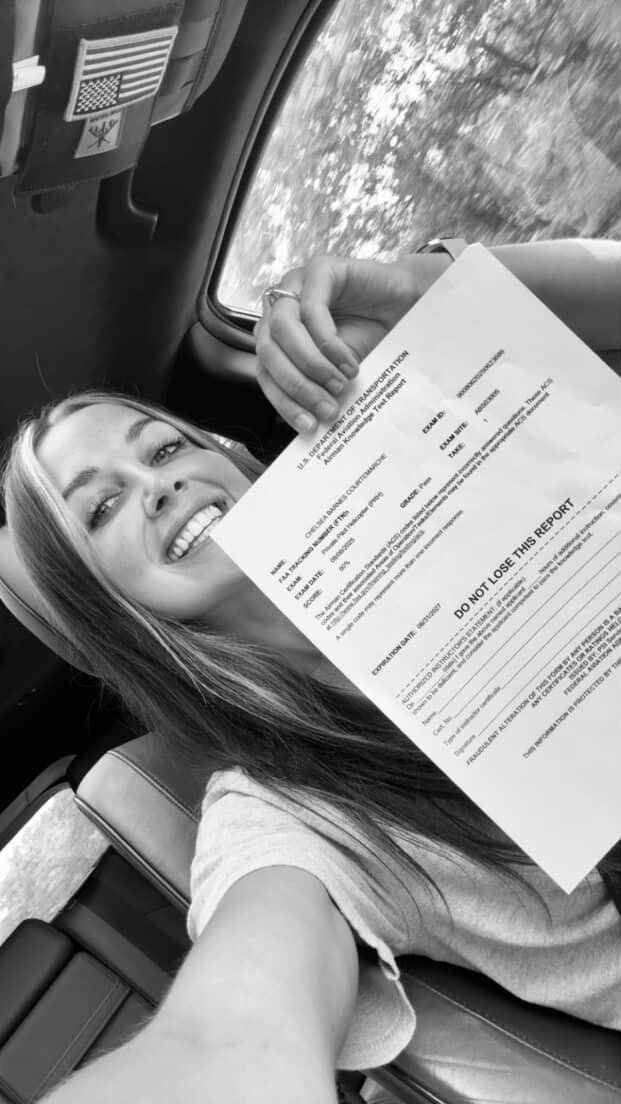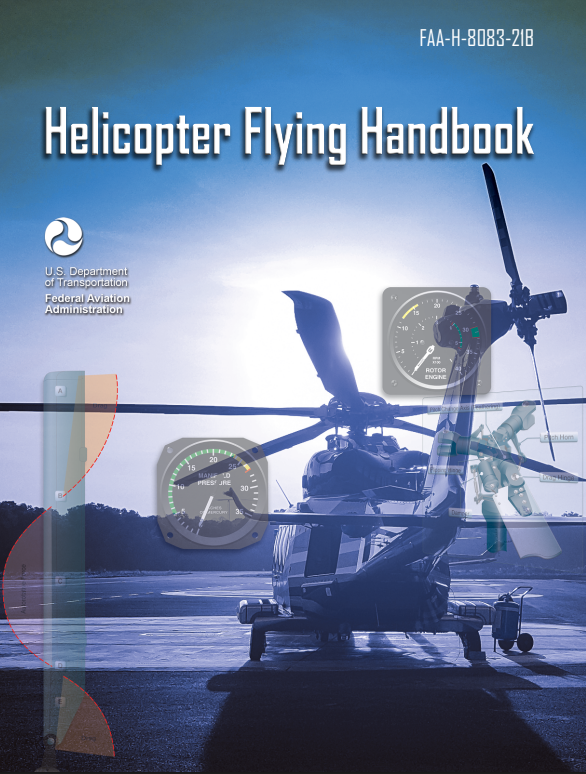ACING the FAA Written Exam
If you are working toward your Private Pilot Certificate, one of the required steps is passing the FAA Private Pilot Airman Knowledge Test. This computer-based, multiple-choice exam is administered at FAA-authorized testing centers and covers the aeronautical knowledge areas listed in 14 CFR § 61.105, including regulations, navigation, weather, and aircraft systems. A minimum passing score of 70 percent is required, and the results are valid for 24 calendar months. While it is a ground-based requirement, the knowledge gained is complementary for safe flight operations and will be evaluated again during your practical test. Many flight students dread the written test but it doesn’t have to be a nerve-wracking experience. This blog post walks you through the process to prepare and take the test, as well as some tips on how to excel from our Private Pilot student, Chelsea, who just aced it!
Learning Beyond the Flight Lesson
Chelsea came to aviation as a second career, bringing with her an unparalleled passion to dive into this new field. While many students arrive just for their scheduled lessons, she’s taken a different approach—immersing herself fully in the world of flying. She spends her extra time working at the hangar, asking questions, participating in aircraft maintenance, and listening to conversations between experienced pilots. She takes every opportunity she can to hop into any aircraft to fly. By being present, she’s picking up valuable insights on everything from helicopter aerodynamics and systems to aviation decision-making. This daily exposure is just as important as time in the cockpit. In her limited free time, she hits the books and devotes her time to conventional studying. This approach has paid dividends and Chelsea passed the PPL FAA Helicopter written with a flying colors score of 90. It wasn’t always a smooth process though, and Chelsea shared her experience for this blog to help other aviators get through their written exams.
I started studying early on in my flight training but would run into road blocks where I would be away from the books for a while and then have to re-learn what I had already studied. I ended up getting behind and before I knew it, I was months into my flight training and still hadn’t scheduled my written exam. After talking with my flight instructor, we came up with an aggressive study plan and decided the best course of action was to just schedule the exam…no matter how daunting it seemed or how under prepared I had felt at the time. I hit the books hard whenever I could and zipped through hundreds of practice test questions up until the day of the exam. Communicating with my instructor and having such a supportive team at Monadnock Choppers aided in my confidence when it came time to take the FAA written. I couldn’t have done it without them!
When it comes to the FAA written exam, Chelsea’s best advice is simple: “What doesn’t get scheduled, doesn’t get done.”
How to prepare for the Exam
1. Start Early and Make a Plan With Your Instructor
Give yourself several weeks—ideally a couple of months—to prepare for the FAA written exam. Work with your instructor to create a realistic study plan that fits around your flight lessons, work schedule, and personal commitments. Instead of treating the written as a distant requirement, set a target exam date early so you have a deadline to work toward.
Build study time or ground time with your instructor into your weekly routine and treat it like a flight lesson you can’t skip. Use your instructor’s guidance to sequence topics so they align with what you’re learning in the air. Even 30–45 minutes a day is far more effective than a single long cram session the night before. Consistency not only helps you retain the information but also makes it easier to connect concepts to real-world flying situations as you train.
Our Primary Helicopter CFI, Matthew Santonastaso, advises that, “No topic in aviation is particularly difficult to understand, but the volume is massive so it takes consistency and starting early.”
2. Combine Your Online Program, Ground School, Self-Study and Flying!
Online ground schools are great for structured lessons, videos, and built-in practice tests. They guide you through the FAA-required topics and keep you moving forward. At Monadnock Choppers, we typically use Sporty’s Learn to Fly Online Ground School. But these programs can’t always adapt to your individual strengths and weaknesses—that’s where your instructor comes in.
Our CFIs will tailor one-on-one ground sessions to the areas where you need the most help, explain concepts in different ways, and relate the material directly to the helicopter you’re training in. For example, while an online lesson might explain “translational lift” in general terms, your instructor can walk you out to the aircraft and show you exactly how it applies to the helicopter. The best results come from layering multiple learning methods so you see and hear the same concepts from different perspectives.
3. Use FAA Resources
The FAA provides free, official study materials such as the Helicopter Flying Handbook, the Airplane Flying Handbook, the Pilot’s Handbook of Aeronautical Knowledge, as well as many others. Pair these with FAA’s sample test questions and the Private Pilot’s Airman Certification Standards (ACS) so you know exactly what’s expected.
4. Practice with Realistic Test Conditions
Take several timed practice exams on a computer using your cx3 (or comparable flight computer) and tools. This gets you used to the pace, question style, and navigation tools. Although some flight schools still encourage the use of an e6b or plotter, aviation has come a long way and we encourage our students to use and be comfortable with modern tools.
5. Target Weak Areas
Don’t spend all your study time on topics you already know. Use your practice test results to identify problem areas—whether that’s aerodynamics, airspace classifications, or interpreting weather charts—and focus your review there.
6. Learn from Your Environment and Pilots Around you!
Like Chelsea, spend extra time around the hangar, talk with instructors and other pilots, and connect what you’re studying to real-world flying situations. It is also helpful to schedule time with other student pilots whether formally at the hangar or over burgers at Mama’s to have a support system.
How to Sign Up for the Exam
Get Your FAA Tracking Number (FTN) – Before scheduling, you’ll need an FTN from the FAA’s Integrated Airman Certification and Rating Application (IACRA) system. The FAA provides a User Guide for IACRA on their website.
Schedule Through PSI – The FAA uses PSI as its authorized testing provider. You can search for a local testing center and book your appointment online.
Bring the Right Documentation – On test day, you’ll need:
Instructor endorsement in your logbook or a graduation certificate from an FAA-approved ground school (per 14 CFR § 61.35).
Government-issued photo ID showing your name, signature, address, and proof of age.
Note: There is other documentation required if you are retaking the test
What to expect at the testing center
The test is 60 multiple-choice questions, and you’ll have 2 hours and 30 minutes to complete it. You will be provided with a computer terminal, scratch paper, and an FAA-provided calculator. No personal electronics or reference materials are allowed. The questions are randomly selected from the FAA’s published bank, so the more variety you practice with, the better. When you finish, you’ll receive your score immediately. A passing score is 70% or higher, and your results will include feedback on areas where you missed questions. The passing test is valid for 24 calendar months. If your practical test (checkride) isn't passed within that window, you will need to retake the written exam
after the exam
You'll receive an Airman Knowledge Test Report (AKTR) instantly with your score. It includes Learning Statement Codes (LSCs) or Airman Certification Standards (ACS) codes that pinpoint areas where you need improvement. Your instructor must review these flagged areas with you and provide an endorsement confirming that review. Per the FAA’s Airman Certification Standards (ACS) and 14 CFR § 61.39(a)(1), you must present your Airman Knowledge Test Report (AKTR) with a passing score and endorsement to the examiner before starting your practical test (checkride).
Study Tips!
Start Early—Don’t Procrastinate: Spread out your study over time to allow concepts to sink in.
Use Multiple (Trusty) Study Resources: Stick to FAA-approved materials—ground school textbooks, FAA handbooks, and sample questions.
Simulate the Test Environment: Take timed, computer-based practice tests using your flight computer. Eliminate answers and use other thoughtful test taking strategies.
Target Weak Spots: Use your practice tests and codes to drill down on topics where you're struggling.
Engage in Collaborative Learning: Just like Chelsea, show up as often as you can, work alongside peers, discuss tough questions, and ask your instructor for clarification.







